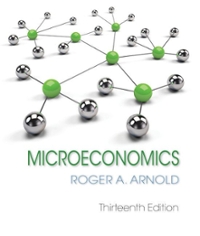Question
Question 40 marks Consider an economy that consists of two people Alice (A) and Brett (B), and two goods, fruit (X) and fish (Y). Alice
Question 40 marks
Consider an economy that consists of two people Alice (A) and Brett (B), and two goods, fruit (X) and fish (Y). Alice has 4 pieces of fruit and 8 fish. Brett has 12 pieces of fruit and 4 fish. Alice and Brett both have strictly convex indifference curves over these two goods. At the initial endowment point, Alice is willing to give up 2 fish for one piece of fruit and Brett is willing to give up 1/3 a fish for a piece of fruit.
a. Draw an Edgeworth box diagram depicting this situation. (Put fruit (X) on the horizontal axismand fish (Y) on the vertical axis). Label the axes and the endowment point E.
(10 marks)
b. Is the endowment point, E, Pareto efficient? Explain.
(5 marks)
c. Draw a line that represents the relative price of fruit to fish that is not a competitive
equilibrium. Explain why this is not a competitive equilibrium.
(10 marks)
d. Redraw the Edgeworth box diagram. Draw a line that represents the relative price of fruit to fish that clears both markets so that there is no excess or shortage in demand or supply. Explain why this is a competitive equilibrium.
(10 marks)
e. Evaluate the following statement: "The Second Fundamental Welfare Theorem means government in market economies can improve equity as they can make any final allocation of goods be a competitive equilibrium."
(5 marks)
Step by Step Solution
There are 3 Steps involved in it
Step: 1

Get Instant Access to Expert-Tailored Solutions
See step-by-step solutions with expert insights and AI powered tools for academic success
Step: 2

Step: 3

Ace Your Homework with AI
Get the answers you need in no time with our AI-driven, step-by-step assistance
Get Started


